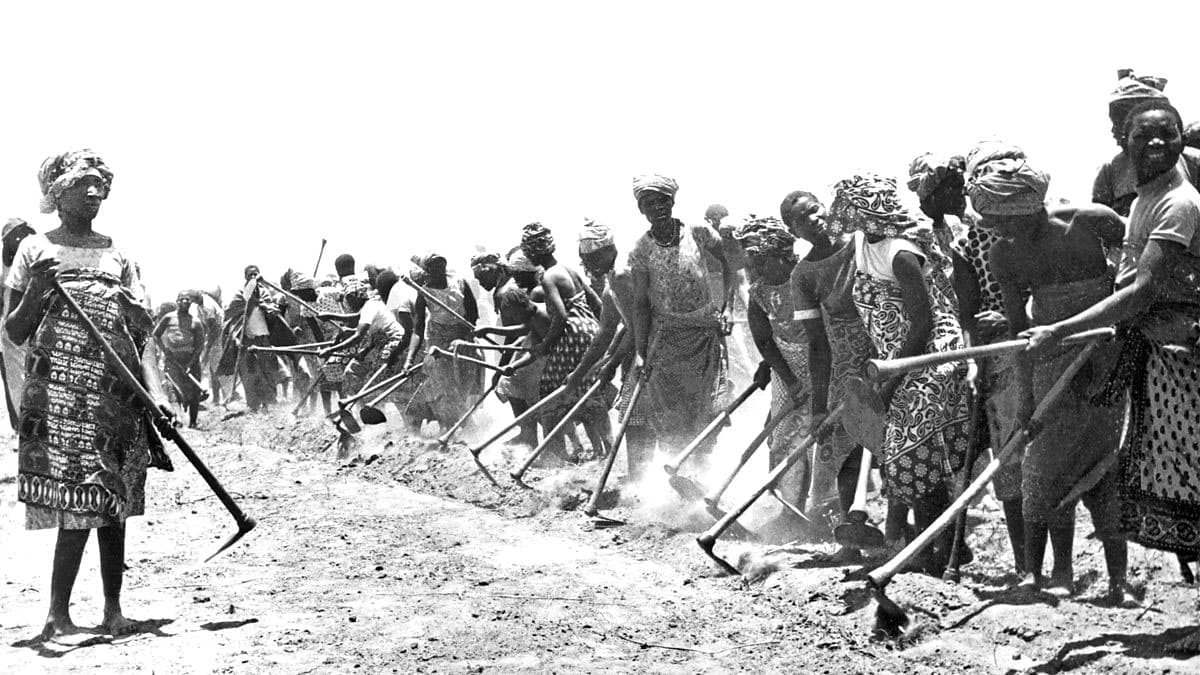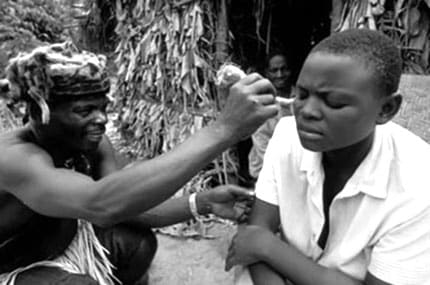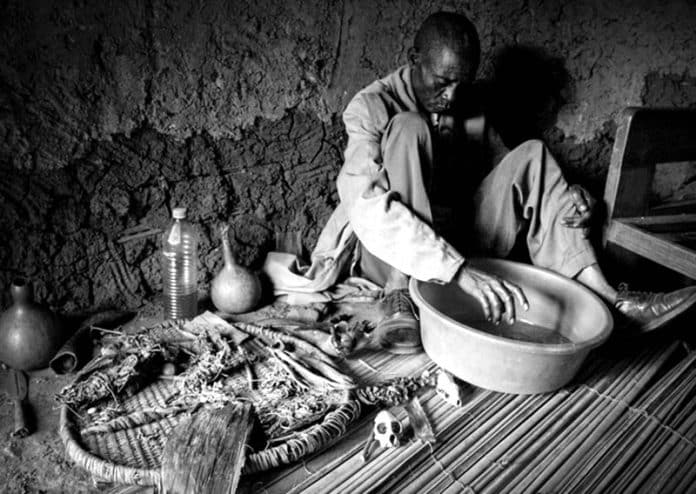The Status of Waganga wa Kienyeji After Tanganyika Independence
Initial Setup of the New Government and Policy Structures
In 1963, which was 2 years following independence of Tanganyika, a new government was started under the control of ‘Tanganyika African National Union’ (TANU), a party whose leader was Julius Nyerere. As TANU planned to set up a one single party system in the country, they replaced traditional chiefs across the country and appointed leaders. Because of banning ‘cultural leadership’, traditional authorities and ways to maintain unity and harmony in society were lost where people reduced the dependence on cultural institutions. The average person could not rely on organizations government, so if there were problems, to help yourself was the only solution. Meanwhile, the healthcare situation in Tanzania was very poor as there were only 12 Tanzanian doctors providing services in hospitals. In 1978, primary health services began to be developed in Tanzania. In order to fix the shortage of health care providers, the government trained more than 6,000 rural health workers to raise awareness on basic health care and modern medicine for rural communities. Training and promoting of modern

medicine was launched together with the village planning program in the mid-1970s, also known as the Sogeza operation where people had to live in crowded settlements.
The Launch of Ujamaa Villages and Their Impact
255 Some of these settlements came to be known as Socialist “Ujamaa” Villages. The construction of Ujamaa Villages as a legal instrument of socialism and development, made people more influential in their own state of health for the first time since the end of German rule. The importance of voluntary villages as creative institutions was highly impacted in some areas because people were forced to live in villages. This situation led to a change in District policies regarding practitioners who specialized in anti-witchcraft. Waganga were stopped from visiting villages where collective farming was enforced. As matter of fact, permission to travel within districts was restricted for Waganga. But to make matters worse, because of poor planning by the government, a strategy to provide primary health care using village health workers went flat.
What happened in the 1970s in Tanzania is well documented and analyzed, especially the things that were not successful. However, much went ‘right’ as well. Many good intentions were on the basis of creating a political structure as the country established the universal primary education program and adult education which had a lot of success and significantly reduced illiteracy in the country. Also, the leadership of the country was very vocal and made a lot of effort to stop nepotism basking on tribes or religious beliefs people had. The emphasis was on national unity that was targeted through the Swahili language. Tanzanian socialist brand, introduced by Julius Nyerere drew the attention of many nations, donors, international organizations, activists and people who were interested with the emphasis on equality, the participation of the people in decision-making, self-reliance, and access for everyone to basic needs. In fact, Tanzania was in the forefront when it came to creation of public health plan even before the World Health Organization recognized primary health care as a global strategy.
Health Care Service Shortage
In general terms Tanzania created a better environment for the developing its society even though a major part of its reform policies had structural failures due to economic crises in the eighties. At the same time, western conventional medicine continued to reach the international medical level and spread to all parts of Africa. African governments adopted it as formal health

care, which often means only health care provided with public financing were operating. Despite the tremendous growth of modern medicine here In Tanzania the ratio of physician to patient in 1997 was 1 in 22,716. This ratio should be accounted when reviewing the size health workers trained to perform several doctoral duties back then. Services by many hospitals were and still are far away from rural residents, whereby as of June 1997, Tanzania had 195 hospitals, 302 health centers and 3,577 dispensaries. But, on the positive side is these clinics served more than 8,000 villagers. Still, development of African modern health care here in Tanzania needed to be seen in a wider perspective of human interactions with diseases through health searching dynamics, illustrated by a complete multi-user system. People’s health and healing quest is done on interactions between, on the one hand, a modern or global clinical medicine and many other alternatives on the other hand. The key to self-healthcare are the services of indigenous healers, among them are midwives, spiritual healers, diviners and herbalists, which includes some Chinese and Indian professionals who mainly work in cities.
Traditional Health Treatments as an Alternative
Consumers of public healthcare often use modern medicine or herbal remedies to cure the real etiology of the disease that is directly related to biological manifestations. But still, many users have similar attitudes embedded in social, intellectual and spiritual concepts, which are as important as physical conditions. Spiritual concepts take references from ancestral health and disease concepts that explain the cause of the illness or condition to the disturbance of spirit forces triggered by ancestral spirits, evil spirits or magical effects, which are also known as African illnesses or problems. Modern Western medicine has no answers to these spiritual issues and therefore does not provide any solution. The reason is that African diseases or theological problems are often difficult because of social and cultural factors.
Diagnostics, spiritual examinations, and medical treatments by Waganga in many parts of East and Central Africa, has allowed explanations in terms of ancestral perspectives as well as human created, spirit related healing and cures. In terms of Waganga who give both herbal

remedies from natural vegetation and from animals, but also fight against charms and angered ancestors, curses, and evil witches, (they need motivation and security from their spirits) in order to be able to connect people with spirits. For this intention, they can 1) read lessons to weaken enemies. ; 2) advise villagers or family elders about customs, rituals and how to protect them from witchcraft; 3) Offering sacrifices to paralyze ancestral spirits or provide ways to protect oneself or drugs from clients. Tanzanian societies, however, differ widely in cultural organizations and beliefs in the perspective of diseases and health. For this reason, clients prefer the services of Waganga who come from the same tribe as them. In rural areas, most Waganga are farmers who work part-time for their duties as healers / spiritual guides or herbalists. Well-known Waganga are always available to serve their clients full time. Leaving aside cultural, social and political factors, economic and emotional factors need to be put under considerations also. For example, many rural Tanzanians often have a lot of challenges when it comes to earning money. But, they are able to alternatively find traditional healers “Waganga” who can treat them for free or they can serve them to pay for the services they have received. Although the instigating to finding the source of diseases or disorder influences behavioral health practices for clients past experience and efforts to find a cure or well-being should be considered. Many clients are often frustrated by the services they receive in modern health care. Some studies have shown that people in the East and Central African region do not like modern health services. Some of the most common causes for dissatisfaction are:
- Hospitals are very far away in times of emergency treatment.
- Long waits at urban or rural clinics.
- Meeting time is limited by doctors or hospital staff.
- Feeling confused or alone in an unfamiliar environment.
- Patients have a very little chance to explain their challenges and concerns.
- Slight or indifference to the psychological and social causes of disease.
- Misunderstandings about hospital staff and patients in regards to disease concepts.
- Getting medication without explaining the cause of the disease and without prescribing the drug.
- Leaving without proper medication because medication is not available.
The reasons outlined here show that after independence traditional services such as those of Waganga have continued to be very important in Tanzania and continue to be practiced in large numbers and are recognized albeit quietly by the Tanzanian government (Tip: article such as “Tanzania Approves Herbs for Erectile Dysfunction” shows how people and the Government in Tanzania are starting to turn their attention back to traditional medicines). It is estimated that Tanzania has about 75,000 traditional health service providers leading to a ratio of 1/400 professionals. Considering that only a small percentage of these healers are nationally registered there is every reason to assume that there are a lot more traditional healers who are actively working. In a country with an estimated population of 34 million (2002 census), 80 percent of those living in rural areas, access to traditional healers is much easier. Problems can arise, however, when a healer of specific specialization is needed. In general, the affirmative claim that modern health care is accepted, adopted and understood socially and politically by referring to its medical resources and not essentially the acceptance of its diagnostic principles. Some African scholars further argue that traditional medical practice needs to be quickly judged on the basis of its merits, as modern medicine cannot compete with the incidences of diseases in Africa. What is the status and role of traditional health services today in Tanzania and how are the development, inclusion and preparation of policy formulation planned? This is a million dollar question that needs answers!
For more articles on natural remedies (traditional medicines) click here!

































